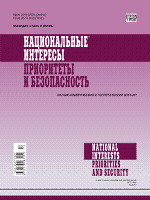Abstracting and IndexingРИНЦReferativny Zhurnal VINITI RAS Worldcat LCCN Permalink Google Scholar Online availableEastvieweLIBRARY.RU Biblioclub |
Reduction factors of power intensity in Russian economy
Available online: 28 June 2014 Subject Heading: Priorities of Russia JEL Classification: Pages: 2-9
The article considers the reduction of energy consumption and carbon emissions is one of the main priorities for the state and business. World practice shows that the effect of reducing the power intensity of the economy and reduce greenhouse gas emissions can be achieved through technological progress. The main directions of this progress are the research and development (R&D) and technological diffusion. The author points out that the main channel of technological diffusion is direct investment in many modern foreign researches. This paper justifies hypothesis that both foreign direct investment and domestic expenditure on research and development are the factors reducing power intensity of the Russian economy. The method of research is econometric modeling. The work reveals that, intensification of national research and development has a significant impact on the reduction of energy consumption, rather than technological spillover. This article proposes an explanation for this phenomenon, based on the theory of technological absorption and results of previous studies of cost barriers on the way of diffusion of energy efficient technologies and alternative energy technologies. Keywords: energy intensity, carbon intensity, technological diffusion, foreign direct investment, research, development, econometric model References:
|
ISSN 2311-875X (Online)
|
|








